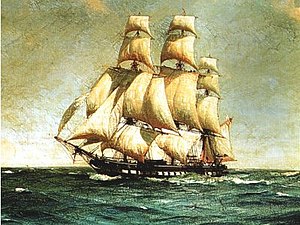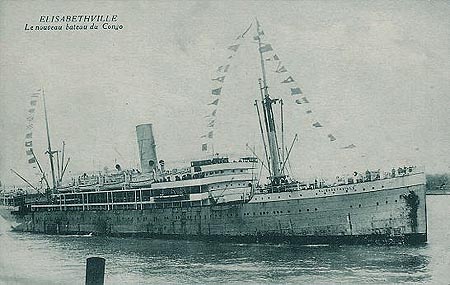Shipwrecks !
Shipwrecks & Some Treasure Salvage
From various newspaper source - by Pascal Kainic
Fortunes have been made and lost in salvage operations and down the years, maritime disasters have continually provided speculators with opportunities for investment.
For example, between January, 1826 and August, 1928, there were over 2,000 shipping disasters on the Australian coast and apart from the awful death roll, the financial loss was considerable.
In some cases, (however, the loss of one section of the community placed a small fortune within the reach of another and there are records of some spectacular salvage feats performed in Australia waters.
On June 21, 1904, the mail steamer Australia was wrecked near Port Phillip heads and the wrecked vessel was bought by a salvage company for £290 and the cargo for £66.
The company blew the hull to pieces and salvaged much of the cargo. One case of Boosey and Co.'s band was sold for £66 and the metal was disposed of for £1,000.
Last year a company claimed that it had created a record for salvage work in Australasia, when in 12 days, cargo valued at £58,000 was recovered from the Norwegian steamer Yarra.
The Yarra took fire while loading copra at Gizo in the Solomon Islands and the vessel was beached in Gizo Harbour in a sinking condition.
A contract for the salvage of the cargo was entered into with an Australian firm. The party found the Yarra full of water fore and aft and in order to raise her the vessel had to be plugged.
About 9,000 tons of water was pumped out of the Yarra, but before the valuable cargo could be reached 20,000 bags of putrid copra had to be dumped overside.
About 2,500 tons of cargo, including 1,000 tons of silver lead concentrates and 1,500 tons of zinc slabs, were recovered.
Perhaps the greatest of all salvaging operations was the recovery of the sunken German warships at Scapa Flow, but there have been many more romantic and achievements.
In August 1927, it was reported that after months of hard work an attempt to salve the treasure on the sunken East Indiaman, the Grosvenor, which was wrecked in August, 1782, on the Pondoland coast, was about to reach its climax.
For some months engineers had been superintending the driving of a tunnel 450ft. through solid rock at the base of which the Grosvenor had been located.
The old vessel was covered by many feet of sand, and, when the bulletin was broadcast in August, there remained 140ft. of rock through which a hole had to be drilled.
Before the salvage syndicate commenced the attempt at salvage they received proof that among the treasures shipped on board the Grosvenor was a considerable quantity of diamonds from Madras valued at 24,444 Star Pagodas, the standard of gold currency in use in the Madras Presidency in those days. .
At the same time, it was announced that Italian divers from the salvage company SORIMA had recovered a steel chest containing 13,000 carats of diamonds and other precious stones valued at £1,250,000 from the wreck of the Belgian steamer Elizabethville, which was sunk in 1917 by a German submarine, while en route from the Congo to Le Havre.
Altogether, diamonds worth £400,000, the property of the Belgian Government, have been recovered. The salvage party received 60 per cent, of the value of the diamonds.
It had been known for some time that the vessel was lying in 40 fathoms of water off Belle-île-en-Mer, France, and that the gems were in the captain's cabin.
French trawlers unsuccessfully attempted to salve the gems and a further attempt was made by the crew of the Italian salvage ship Artiglio.
A week after the diver located the wreck he forced an entrance into the captain's cabin and was amazed and disappointed to discover that the submarine charges, which had been exploded to force a way to the cabin, had evidently dislodged the jewel chest and it had been flung away.
It was decided to continue the search for a week and the following day the huge electromagnet on the Artligio, which was capable of lifting 30 tons, brought to the surface the chest with its load of treasure.
Huge coups have been made in the salvaging of large vessels. Nearly £1,000,000 in gold was recovered from the Oceana as she lay on the floor in the straits of Gibraltar, and £70,000 was taken from the Alfonso XII, off the coast of Spain.
One the biggest amount ever recovered was £5,000,000 in gold and silver bars from the Laurentic, which was sunk by a German submarine off the Irish coast.
People have laughed at these modern Jules Vernes before and lived long enough to marvel at the wonders of science.
In other ways science is now assisting in an attempt to recover gold and silver valued at 20.000.000 guilder (approximately £1,666,000) from the ship Lutine, which was sunk off the island of Terschelling, near the coast of Holland. Lloyd's have arranged a contract with a Dutch salvage firm who will use the latest salvage appliances.
An elaborate machine called the "sand-sucker" will lift sand from the ocean bed. Divers, who will work on the wreck, will carry telephones with which they will be able to communicate with the crew on the salvage vessel.
When she sank, the Lutine was carrying money for the payment of British troops who were then helping Holland against France.
Nowadays, "high tech" salvage company such as Odyssey Marine are breaking records with very deep wreck treasure salvage like the expedition on the Gairsoppa and her huge cargo of silver... More are to come... !!


Add a comment